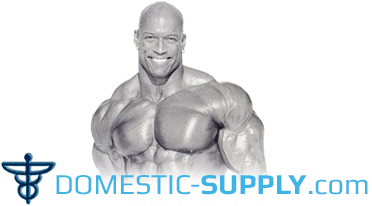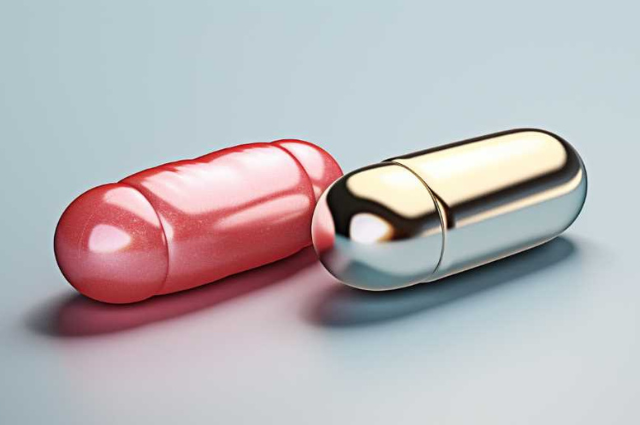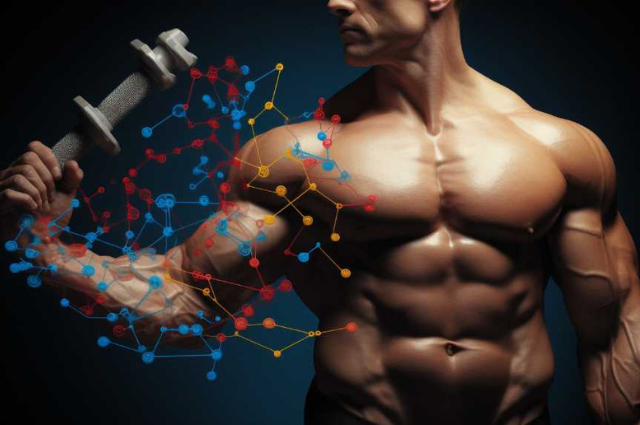Understanding Anabolic Steroids Vs Corticosteroids: a Guide
This guide explores the intricacies of anabolic steroids and corticosteroids. It provides a comprehensive comparison of their functions, benefits, and risks.
The guide offers an in-depth understanding of both types of steroids. It elucidates their scientific workings and potential effects on the human body.
The aim of this guide is to equip readers with essential knowledge that will guide them in making informed decisions concerning steroid use.
To achieve this, the guide discusses each type of steroids separately. It provides detailed information about anabolic steroids and corticosteroids before drawing a comparison that highlights their significant similarities and differences.
As we delve into this complex topic, the objective remains to provide accurate, scientifically grounded information. The goal is to foster better comprehension of these potent substances.
Key Takeaways
- Anabolic steroids are synthetic substances that promote muscle growth and enhance athletic performance, while corticosteroids are synthetic versions of hormones produced by the adrenal glands that regulate immune response and inflammation.
- Anabolic steroids are primarily used illicitly by athletes to gain a competitive edge, while corticosteroids are commonly used for medical purposes to treat conditions such as asthma, allergies, and inflammatory diseases.
- Misuse of anabolic steroids can lead to severe health consequences, including liver damage, cardiovascular diseases, and psychiatric disorders, while prolonged use of corticosteroids can result in osteoporosis, hypertension, diabetes, and increased risk of cataracts.
- The decision to use anabolic steroids should only be made for legitimate medical purposes under the supervision of a healthcare professional, while the use of corticosteroids should be based on a careful risk-benefit analysis considering the patient's condition, symptoms, and overall health status.
Defining Anabolic Steroids
One must understand that anabolic steroids are synthetic substances similar to the male hormone testosterone, often used to promote muscle growth and enhance athletic performance. These steroids, from a chemical perspective, are characterized by their molecular structure - a series of four cycloalkane rings, namely, three six-member cyclohexane rings and one five-member cyclopentane ring. This structure is a defining characteristic of all steroid hormones.
The anabolic steroids are grouped into two main types: exogenous, which are synthetic forms introduced into the body, and endogenous, which are naturally produced within the body. Exogenous anabolic steroids include substances such as Methandienone and Trenbolone, while endogenous types include testosterone and dihydrotestosterone.
Anabolic steroids function by binding to the androgen receptor, a type of nuclear receptor that is activated by binding any of the androgenic hormones. Once bound, this receptor-ligand complex translocates into the nucleus, where it influences the transcription of specific genes, resulting in the enhanced muscular growth and performance often associated with these substances.
However, the misuse of anabolic steroids can lead to severe health consequences, including liver damage, cardiovascular diseases, and psychiatric disorders. Therefore, these substances are controlled in many countries and are only prescribed for medical indications such as delayed puberty, wasting conditions, and low testosterone levels.
The Science Behind Anabolic Steroids
To delve into the scientific underpinnings of anabolic steroids, it is imperative to first consider the three fundamental aspects: their biochemical makeup, their interaction with cellular receptors, and the subsequent physiological effects they induce.
Anabolic steroids, also known as anabolic-androgenic steroids (AAS), are synthetically produced variants of the naturally occurring male sex hormone, testosterone. They are characterized by a four-ringed carbon structure, comprising of 19 carbon atoms and 28 hydrogen atoms. The biochemical alterations in anabolic steroids enhance their anabolic, or muscle-building, properties while minimizing their androgenic, or masculinizing, effects.
Anabolic steroids exert their effects by binding to androgen receptors located in muscle tissues. These receptors are intracellular proteins that act as molecular switches, triggering a cascade of biochemical events upon activation. The androgen-receptor complex then translocates to the cell nucleus, where it binds to specific DNA sequences, known as hormone response elements (HREs), thereby regulating the transcription of target genes.
The physiological effects of anabolic steroids are broad and multifaceted. These compounds promote muscle growth by increasing the rate of protein synthesis and decreasing the rate of protein degradation in muscle cells. They also stimulate the development of skeletal muscle and the secondary male sexual characteristics. However, the misuse of anabolic steroids can lead to several adverse effects, including liver damage, cardiovascular diseases, and psychiatric disorders.
Understanding Corticosteroids
While anabolic steroids are largely associated with muscle development and enhancement, it is essential to shift our focus to corticosteroids, another class of steroids that play a pivotal role in managing inflammation and immune responses in the body. These steroids are a synthetic version of hormones typically produced by the adrenal glands, located atop the kidneys.
Corticosteroids are classified into two main types: glucocorticoids and mineralocorticoids. The former regulates the body's immune response and inflammation, while the latter aids in maintaining salt and water balance, thus regulating blood pressure. It is the glucocorticoids that are commonly prescribed in medicine due to their powerful anti-inflammatory and immune-suppressing properties.
To understand the implications of corticosteroids, let's delve into the following four points:
- Medical uses: Corticosteroids are utilized in treating a variety of conditions such as asthma, allergies, rheumatoid arthritis, lupus, multiple sclerosis, and inflammatory bowel diseases. They reduce inflammation and suppress the immune system, thus providing relief from symptoms of these conditions.
- Administration: These steroids can be given orally, topically, or by injection, and the mode of delivery often depends on the condition being treated.
- Side effects: Long-term use of corticosteroids can lead to side effects, including osteoporosis, hypertension, weight gain, mood swings, and an increased risk of infections.
- Withdrawal: Abrupt discontinuation of corticosteroids can result in withdrawal symptoms. Therefore, it is crucial to follow a doctor's instructions when tapering off these medications.
How Corticosteroids Work
In the realm of medicine, the effectiveness of corticosteroids hinges on their ability to mimic the functions of naturally occurring cortisol, a hormone produced by the adrenal glands. Cortisol has a myriad of roles, such as regulating metabolism, reducing inflammation, and assisting with memory formulation. Corticosteroids, when administered, work to replicate these effects, providing significant utility in managing a spectrum of health conditions.
Scientifically, corticosteroids operate via genomic and non-genomic mechanisms. In genomic action, corticosteroids bind to glucocorticoid receptors present in the cytoplasm of cells. This binding forms a complex, which translocates into the nucleus, influencing the transcription of certain genes. This modulation affects protein synthesis, thus impacting cellular functions and inflammatory responses.
In non-genomic action, corticosteroids interact with cell membrane receptors, triggering a cascade of intracellular events that lead to anti-inflammatory effects. These actions occur rapidly, within minutes of corticosteroid administration, unlike the genomic effects which typically take hours to manifest.
Corticosteroids also have vasoconstrictive properties. They narrow the blood vessels, thereby reducing the redness and swelling associated with inflammatory conditions. This vasoconstrictive action is particularly beneficial in treating conditions like dermatitis and eczema.
It's essential to note that while corticosteroids are invaluable in treating several conditions, they can also cause side effects when overused or used for prolonged periods. These may include osteoporosis, hypertension, and increased susceptibility to infections due to suppressed immune response. Therefore, it's crucial that corticosteroids are used under the guidance of a healthcare professional, who can balance the benefits against potential risks.
Comparing Anabolic and Corticosteroids
Frequently, people confuse anabolic steroids with corticosteroids due to their similar names, yet they differ significantly in terms of origin, function, and potential side effects.
These differences can be broken down into four key areas:
- Origin: Anabolic steroids are synthetic variants of the male sex hormone testosterone, designed to enhance muscle growth and physical stamina. In contrast, corticosteroids are produced naturally in the body or synthetically in the laboratory. They mimic the functions of cortisol, a hormone that our bodies produce in response to stress.
- Function: Anabolic steroids primarily function to promote muscle growth, increase strength, and improve physical performance. They are often used illicitly by athletes to gain a competitive edge. Corticosteroids, on the other hand, are powerful anti-inflammatory drugs used to treat a wide range of conditions, including asthma, rheumatoid arthritis, and lupus.
- Administration: Anabolic steroids can be taken orally, injected, or applied topically. Corticosteroids can also be administered in these ways but are often given as inhalers or injections to target specific areas of inflammation.
- Side Effects: Both types of steroids have potential side effects. Anabolic steroids can lead to aggressive behavior, acne, liver damage, and even heart failure. Corticosteroids can cause weight gain, mood swings, and weakened bones if used for extended periods.
Benefits and Risks of Anabolic Steroids
Delving into the realm of anabolic steroids, it is crucial to examine both the potential benefits associated with their use and the inherent risks that accompany their consumption. Anabolic steroids, synthetic substances related to male sex hormones, are known for their ability to enhance muscular development and athletic performance. They have legitimate medical uses, notably in treating conditions such as delayed puberty, muscle loss from certain diseases, and types of anemia.
However, the non-medical use of anabolic steroids carries substantial risks. Physiological implications range from altered lipid profiles, leading to cardiovascular diseases, to hormonal imbalances causing secondary sexual characteristics changes and psychological effects such as mood swings and increased aggression. Liver damage, kidney disease, and increased risk of stroke or heart attack are also associated with prolonged use.
Furthermore, anabolic steroids have the potential for physical and psychological dependency, leading to withdrawal symptoms upon cessation. The international sports community condemns their usage due to the unfair performance advantage they provide, and routine testing is implemented to deter such practices.
Despite this, illicit use persists, often driven by societal pressures for physical perfection and improved athletic performance. It is thus essential that individuals contemplating their use understand these aspects fully.
Benefits and Risks of Corticosteroids
Shifting our focus to corticosteroids, one must understand that these substances also carry their unique set of benefits and risks.
Derived from glucocorticoids, corticosteroids are a class of drugs that are extensively used in the medical field due to their potent anti-inflammatory and immune-suppressive properties.
- Beneficial Effects: Corticosteroids are often the first line of treatment for conditions with an underlying inflammatory or auto-immune etiology. They are used to manage a wide range of diseases, from asthma and rheumatoid arthritis to lupus and multiple sclerosis. Their ability to modulate the immune response makes them invaluable in the treatment of organ transplant rejection and septic shock.
- Adverse Effects: Despite their therapeutic benefits, corticosteroids come with a slew of potential side effects. Prolonged use can lead to osteoporosis, hypertension, diabetes, and cataracts. They can also suppress the body's natural steroid production, leading to adrenal insufficiency if abruptly discontinued.
- Dependence and Withdrawal: Corticosteroids can induce a physiological dependence, and abrupt cessation can result in withdrawal symptoms such as fatigue, body aches, and lightheadedness. Thus, a gradual reduction in dosage (tapering) is recommended when discontinuing treatment.
- Risk-Benefit Analysis: The decision to use corticosteroids should always be based on a careful risk-benefit analysis. The specific patient's condition, the severity of symptoms, the expected duration of treatment, and the patient's overall health status are all factors that need to be considered.
Making Informed Choices About Steroids
Understanding the differences between anabolic steroids and corticosteroids is crucial in making informed decisions regarding their usage in medical or athletic settings. Both classes of steroids have unique properties, mechanisms of action, and side effect profiles, all of which must be considered when evaluating their appropriateness for specific applications.
Anabolic steroids, often associated with performance enhancement in sports, promote muscle growth and strength by stimulating protein synthesis, nitrogen retention, and erythropoiesis. However, their misuse can lead to serious health problems such as cardiovascular disease, liver damage, and psychiatric disorders. Therefore, they are classified as controlled substances and their use is strictly regulated.
On the other hand, corticosteroids are widely used in medicine due to their potent anti-inflammatory and immunosuppressive effects. They are invaluable in the management of various conditions like asthma, rheumatoid arthritis, and lupus. However, long-term use can result in significant side effects including osteoporosis, cataracts, and adrenal suppression.
Making an informed choice about steroid use involves weighing the potential benefits against the risks. For patients, this process should be guided by a healthcare provider who can fully explain the implications of steroid therapy and monitor its effects. For athletes, it is vital to understand that the illicit use of anabolic steroids not only poses severe health risks but also violates the principles of fair play.
Frequently Asked Questions
What Are the Legal Implications of Using Anabolic Steroids Without a Prescription?
The legal implications of using anabolic steroids without a prescription vary by country. In the United States, it is a federal offense punishable by fines or imprisonment. Misuse can also lead to professional sanctions if detected in sports or occupational settings.
Unauthorized possession of anabolic steroids is criminalized in many other jurisdictions worldwide, signifying the severity of this illicit activity.
It's essential to consult with healthcare professionals before starting any steroid regimen.
How Can One Identify if a Person Is Abusing Anabolic Steroids or Corticosteroids?
Identifying steroid abuse may involve recognizing physical and behavioral changes.
Anabolic steroid abuse can cause rapid muscle gain, mood swings, acne, and excessive body hair growth.
Corticosteroid abuse might manifest as weight gain, thinning skin, easy bruising, and mood changes.
However, these signs are not definitive and professional medical advice should be sought for accurate diagnosis, as these symptoms could also be indicative of other health issues.
Are There Any Natural Alternatives or Supplements That Can Mimic the Effects of Anabolic Steroids or Corticosteroids?
Yes, there are natural alternatives that can mimic the effects of anabolic steroids and corticosteroids.
For anabolic effects, supplements like whey protein, creatine, and branched-chain amino acids (BCAAs) can promote muscle growth and recovery.
For anti-inflammatory effects similar to corticosteroids, natural compounds like omega-3 fatty acids, curcumin, and ginger have been studied.
However, these alternatives may not produce as pronounced or immediate effects as synthetic steroids.
Does the Use of Anabolic Steroids or Corticosteroids Impact Mental Health?
Yes, the use of anabolic steroids and corticosteroids can impact mental health.
Anabolic steroids are associated with mood swings, aggression, and depression.
Corticosteroids can cause mood changes, memory issues, and confusion.
Long-term use of these drugs may lead to mental health disorders.
However, effects vary depending on dosage, duration of use, individual sensitivity, and the specific substance used.
Always consult with a healthcare professional before starting any new medication regime.
What Are the Withdrawal Symptoms if One Stops Using Anabolic Steroids or Corticosteroids Abruptly?
Abrupt cessation of anabolic steroids or corticosteroids can trigger withdrawal symptoms. These may include fatigue, restlessness, mood swings, insomnia, loss of appetite, and decreased sex drive for anabolic steroids.
In the case of corticosteroids, withdrawal may cause symptoms like fatigue, weakness, body aches, joint pain, and difficulty in managing stress. Severe withdrawal can lead to adrenal crisis, which is a life-threatening condition that requires immediate medical attention.
Conclusion
In conclusion, anabolic steroids and corticosteroids have distinct differences in their compositions, uses, and side effects.
Anabolic steroids are primarily used for muscle growth and carry significant risks including addiction and organ damage.
On the other hand, corticosteroids are used in treating inflammation and autoimmune disorders. However, they may lead to side effects such as weight gain and weakened immune system.
Understanding these differences is crucial in making informed decisions about steroid use in medical treatments and sports.







